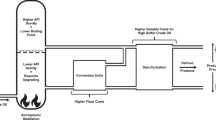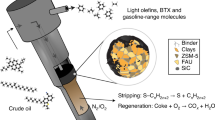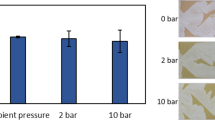Abstract
CRUDE petroleum and the refined oils obtained from it fluoresce strongly in ultra-violet light. This property has recently been utilized for the differentiation of various types of crudes from one another and from refined oils or artificial mixtures prepared to resemble natural crudes1, 2, 3. The oil is either dissolved in a non-fluorescent solvent or spotted on a filter paper and fluorescence noted. Several crude oils from a particular field, some samples of refined oils, and two artificial crudes were examined using a Hanovia Universal fluorescence lamp as the source of ultraviolet light. The samples of refined oils could be readily distinguished from the crudes; but only minor differences were observed between the real and artificial crudes.
This is a preview of subscription content, access via your institution
Access options
Subscribe to this journal
Receive 51 print issues and online access
$199.00 per year
only $3.90 per issue
Buy this article
- Purchase on SpringerLink
- Instant access to full article PDF
Prices may be subject to local taxes which are calculated during checkout
Similar content being viewed by others
References
Bentz and Strobel, Proc. World Petroleum Congress, Vol. 1, 334 (1933).
Balada, Petroleum, 31, No. 48, 11 (1935).
Fabian, Oel. u. Kohle, 39, 631 (1943).
Grader, Oel. u. Kohle, 38, 867 (1942).
Author information
Authors and Affiliations
Rights and permissions
About this article
Cite this article
MUKHERJEE, J., INDRA, M. A Method of Differentiation of Crude Oils based on Chromatography, Capillary Analysis and Fluorescence in Ultra-violet Light. Nature 154, 734–735 (1944). https://doi.org/10.1038/154734a0
Issue date:
DOI: https://doi.org/10.1038/154734a0
This article is cited by
-
Evaluation of methods for determining purity of high-molecular-weight naphthenic-paraffinic hydrocarbons
Chemistry and Technology of Fuels and Oils (1973)



